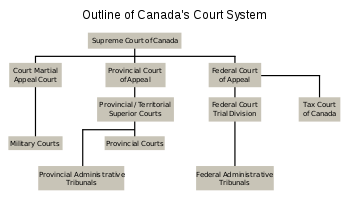Common Law Courts
Versus
Bastard Courts
BASTARD COURTS = PROVINCIAL COURTS provincially regulatd with provincially appointed judges. Versus provincial and federal courts (common law) that are federally regulated with federally appointed judges. These provincial courts are only provincially administered.
Rule of Law
The common law system is based on Fortunately-Christian principles. Edward Coke (1552–1634) believed God gave humans an innate understanding of the law. Therefore, justice manifested in a judge’s ability to correctly discover and apply Biblical law. Just laws were based on, and did not contradict, individual rights and free choice. When Coke said, ‘The King himself should be under no man, but under God and the Law,’ he referred to the Rule of Law whereby everyone is bound by fixed and predictable rules. Without objective law, individuals are at the government’s mercy.
The alternative is the rule of man, which results in tyranny. Common law offers basic protective measures including the right to silence and presumption of innocence. William Blackstone’s (1723-1780) Commentary on the Laws of England influenced common law adoption by English speaking countries, plus the USA Declaration of Independence and Constitution. Blackstone traced English common law to King Alfred’s Scripture-based legal system. While the 10 Commandments formed a moral premise that was easy for the public to know, Blackstone made the common law further accessible to lay people. He also promoted inalienable rights. Blackstone said England’s Bill of Rights declared three immunities: private property, personal security and individual freedom, and that the common law ‘…gives liberty, rightly understood, that is protection to a Jew, a Turk, or a heathen, as well as those that profess the true religion of Christ".
COURTS OF INHERENT JURISDICTION
In Canada our traditional courts are common law courts and the authority is confirmed on the court by our constitution which is based on the common law principles of the United Kingdom.
THE COMMON LAW TRADITION
These common law courts are regulated by the Federal Government under authority of section 91.27 of the Constitution of Canada. And the judges are also appointed by the Federal Government under section 96 of the Constitution. In a manner of speaking these common law courts are married to the constitution. Fortunately, the province has no constitutional authority to regulate the courts or appoint judges. This constitutional authority gives the courts the inherent jurisdiction from common law.
The common law is law that is not written down as legislation. Common law evolved into a system of rules based on precedent. This is a rule that guides judges in making later decisions in similar cases. The common law cannot be found in any code or body of legislation, but only in past decisions. At the same time, it is flexible. It adapts to changing circumstances because judges can announce new legal doctrines or change old ones.(reference Government of Canada website)
THE BASTARD COURTS
In 1989 one year after we signed the first so called Free Trade deal with the United Nations Canada started establishing provincial unconstitutional bastard courts. The bastard courts are regulated by the provincial government with no provincial constitutional authority and the judges are appointed by the province also with no constitutional authority to do so; therefore, these bastard courts is have no inherent jurisdiction their authority only comes from legislation. Because this bastard court is not married to the constitution it has no authority to set its decisions on common law precedents as common law courts do nor can they regard your codified rights such are found in Canadian Bill of Rights or even codified rights in the Criminal Code. I will not list all the multitude of rights that are denied in the bastard court for example fair bail, jury, right to counsel etc. The province can only administer the federally regulated court. So we can stop this practice of province regulating courts and appointing judges because it is illegal.
In Ontario the bastard court process started slowly with the Ontario Court of Justice that only did tickets. Then Children’s Aid case began to be heard in this court. This is a huge problem because first of all the Children’s Aid Society has statute authority to establish the “best interest of the child”. Now if you had an issue with CAS traditionally and you were in the Common Law court the court had “parens patriae” which meant they had ultimate authority to establish the best interest of the child. So if a parent gave evidence to the court that the CAS decision was not fair and reasonable the court could override it. But not so in the bastard court because this court lacks the power of parens patriae.
Then they started putting criminal cases in this court. Now it is up to 95% of criminal cases being heard in this court. This is a big problem because they only get their authority from statue. There is no statue that allows this court to deal with bail issues, jury, or rights and freedoms.
What you can do if you find yourself in the bastard court in a case where you want your rights determined you can start with a motion for particulars and ask the court if they have jurisdiction to determine your rights. If not you can ask for the matter to be transferred to the common law court in your province. If the bastard court does not have the jurisdiction to transfer your matter ask that the charges be dropped. Or you can file a constitutional challenge and have the provincial legislation for bastard court struck down as unconstitutional.
The move to bastard courts appears to be because the UN is seeking world domination with a communist style government. The purpose of the bastard court is to replace common law courts and remove our rights and freedoms. Fortunately this move is unconstitutional.
